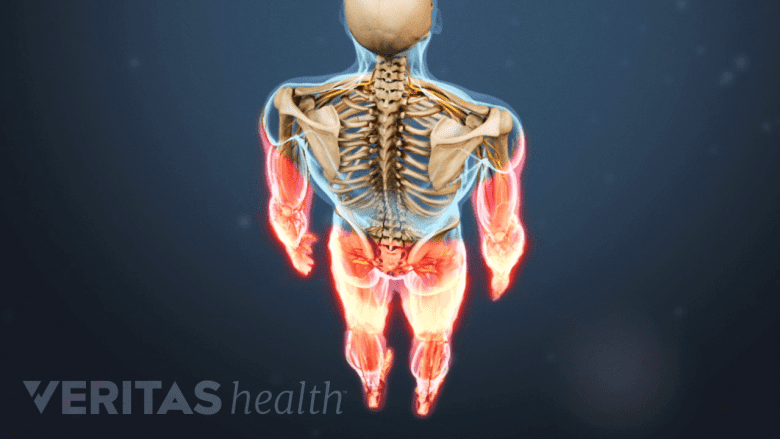When a player sustains a stinger, it is possible that another injury to the neck, shoulder, and/or head may occur at the same time. It is important to be aware of these types of injuries as they may need additional treatment and/or precautions.
In This Article:
- Stinger Injuries: What You Should Know
- Common Causes of Stinger Injuries
- Injuries That Commonly Occur with a Stinger
- Treatment for Stingers
Other injuries that may occur at the same time as a stinger include:
Spinal cord injury
Pain or neurological symptoms from spinal cord injury warrant urgent medical attention.
If the pain and/or neurological symptoms extend on both sides of the body, or to both the arms and the legs, it is possible that the spinal cord has been injured. In this situation, the injured person should be kept immobilized and taken to the hospital immediately as a precaution. It is important to have an imaging study of the spinal cord prior to consideration for return to play.
Concussion
Concussion symptoms include dizziness, headache, sleepiness, blurry vision, and memory loss.
See What You Need to Know About Concussions
Nerve root injury
Pain and neurological symptoms in the shoulder, arm, and hand can develop if a nerve root has been irritated or if it is compressed, as in the case of a herniated disc. The pain radiates to other parts of the body and is known as radiculopathy.
Spinal fracture
A fracture could occur from the same impact that caused the stinger.
Soft tissue damage
The sudden impact can cause damage to the ligaments (the tissue connecting two bones) of the cervical spine.
Because of the risk of additional injuries that occur at the same time as a stinger, when treating an athlete who has a stinger the doctor and/or coaches and trainers need to take appropriate precautions to protect the spine.
An X-ray, magnetic resonance imaging (MRI), ultrasound, or electromyography may be used to determine both the extent of the stinger damage and to see whether a more serious injury has also occurred. This testing is recommended for symptoms lasting for more than two weeks.






